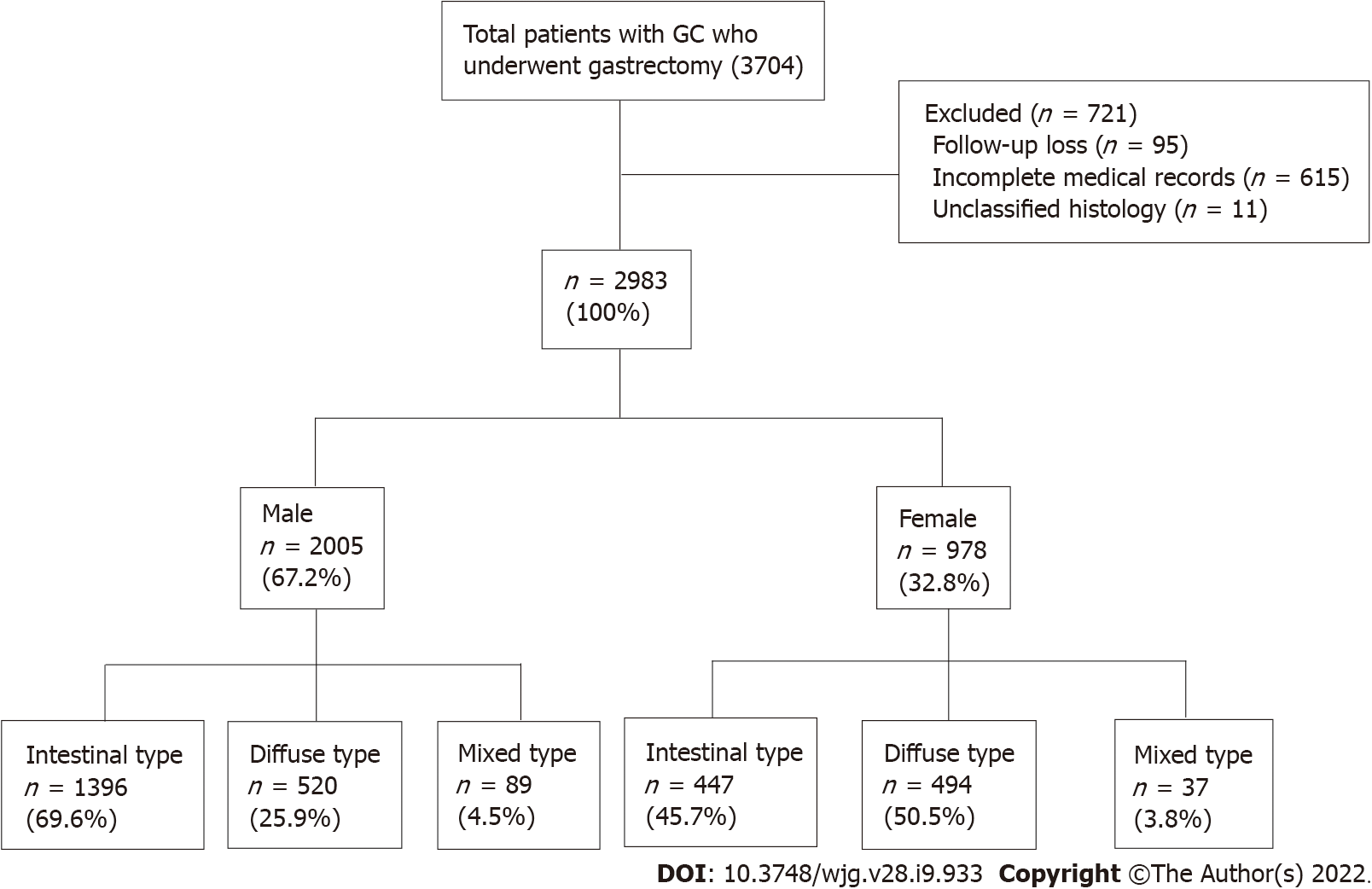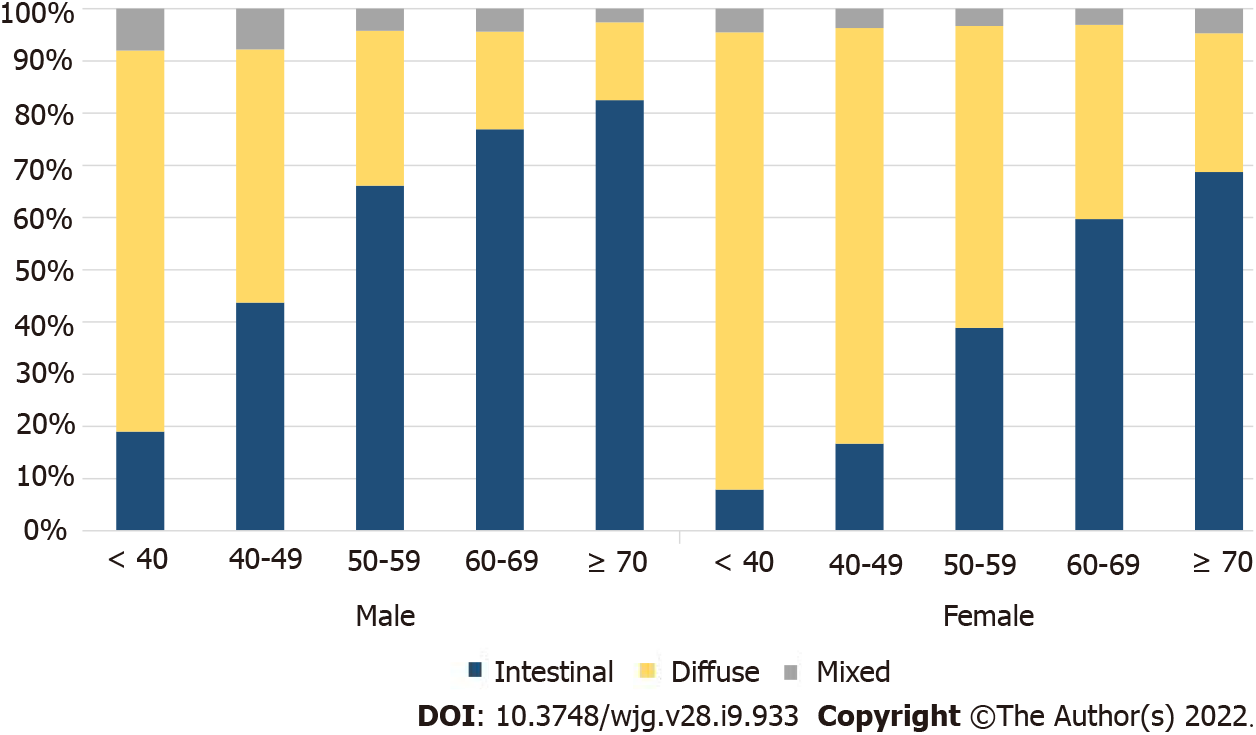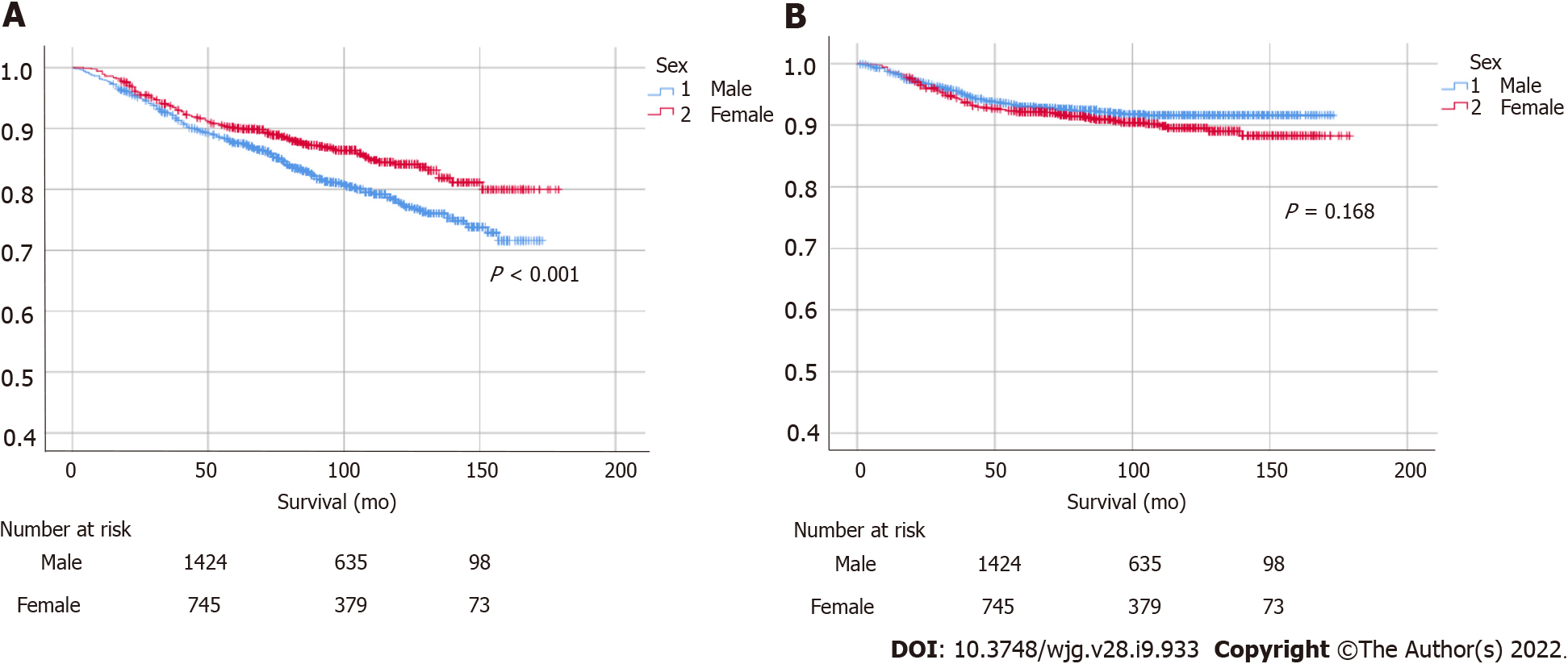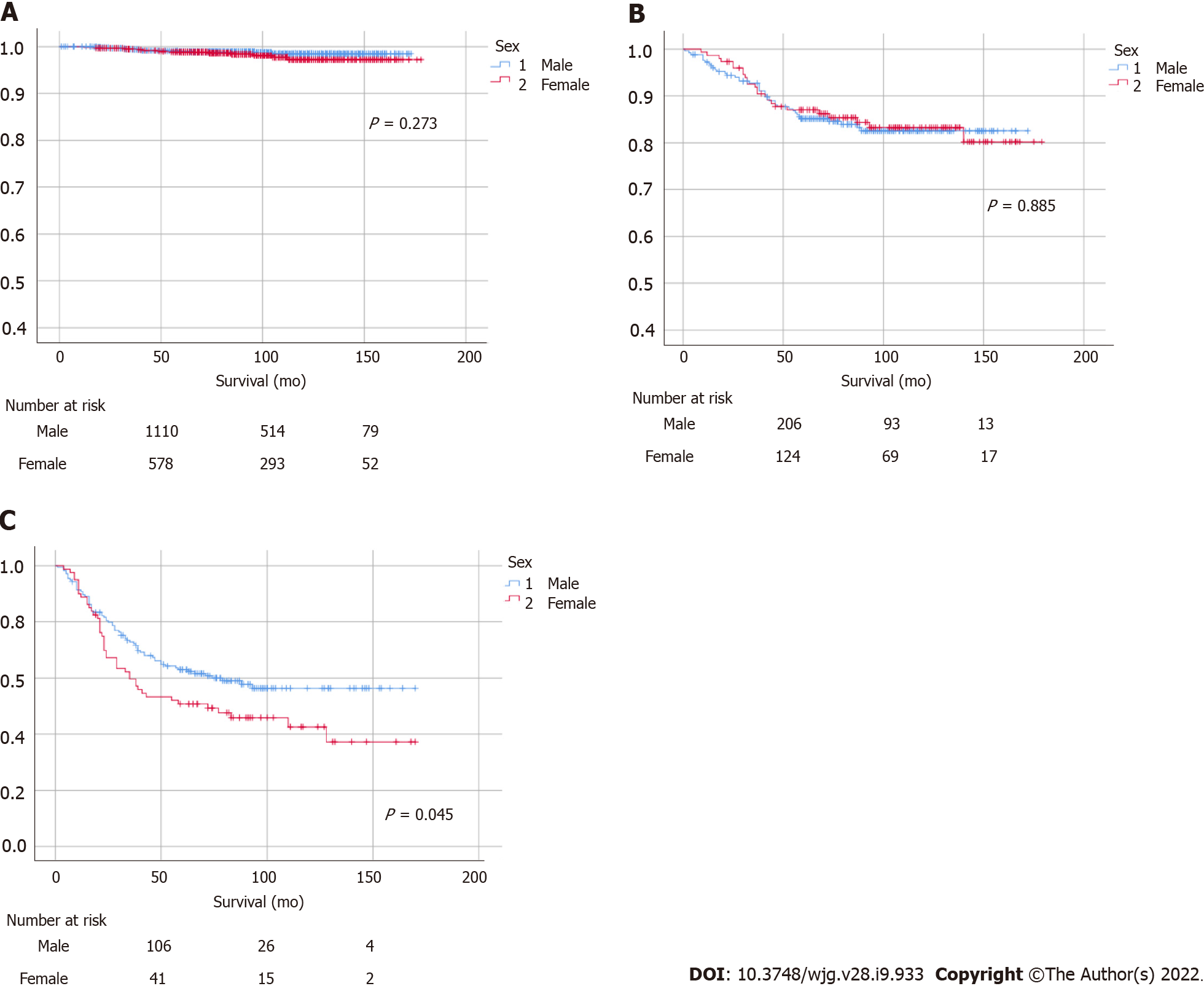Copyright
©The Author(s) 2022.
World J Gastroenterol. Mar 7, 2022; 28(9): 933-947
Published online Mar 7, 2022. doi: 10.3748/wjg.v28.i9.933
Published online Mar 7, 2022. doi: 10.3748/wjg.v28.i9.933
Figure 1 Study flow chart of patient enrollment and exclusion process.
GC: Gastric cancer.
Figure 2 Proportion of histological types of gastric cancer according to sex and age.
The trend of an increasing proportion of intestinal-type cancers with increasing age was observed in both males and females. In males, the proportion of intestinal-type cancer increased steeply from an age of 50 years. In females, the proportion of diffuse-type cancer remained high until 60 years of age. The ratio of intestinal- and diffuse-type gastric cancer in females became similar to that of male patients aged 70 years or older, about 20 years after menopause.
Figure 3 Survival according to sex and initial cancer stage.
(A) Overall and (B) gastric cancer–specific survival. A statistically significant female predominance in overall survival was identified (P < 0.001), while a non-significant male predominance was identified in gastric cancer-specific survival. P values were calculated using the log-rank test.
Figure 4 Gastric cancer-specific survival in (A) stage I, (B) stage II, and (C) stage above III.
There were no significant differences between males and females in stages I and II, but a statistically significant male predominance was observed in advanced-stage cancer (stage III or above, P = 0.045). P values were calculated using the log-rank test.
- Citation: Choi Y, Kim N, Kim KW, Jo HH, Park J, Yoon H, Shin CM, Park YS, Lee DH, Oh HJ, Lee HS, Park YS, Ahn SH, Suh YS, Park DJ, Kim HH, Kim JW, Kim JW, Lee KW, Chang W, Park JH, Lee YJ, Lee KH, Kim YH. Sex-based differences in histology, staging, and prognosis among 2983 gastric cancer surgery patients. World J Gastroenterol 2022; 28(9): 933-947
- URL: https://www.wjgnet.com/1007-9327/full/v28/i9/933.htm
- DOI: https://dx.doi.org/10.3748/wjg.v28.i9.933












